Fearlessness does not mean the absence of fear; it is, in fact, our decision to meet fear head-on! If we understand this, then it’s the first step towards courage. We usually think of courage as an absence of fear alone; our society considers ‘daring’ and ‘fearlessness’ as synonyms. However, we must understand that we all have to encounter fear at some point, and we are all determined to confront it. Fearless people do not belong to a separate community; they have not fallen from the sky. Anyone who is fears something and has the capacity to decide, can become fearless!
When I responded to Barkha Dutt in my own capacity, what was going on in my mind?
Namaskar, respected Chairperson Mr. Prabhakar Nanavati, organizer Comred Anand Menase, dignitaries present in the audience, Comred Bhalchandra Kango, Madhukar Bhave, Medha Samant-Purav, and all my friends in Belgaum. Belgaum is the city of my grandparents. My grandfather, Gundopant Tendolkar, was the editor of the newspaper ‘Tarun Bharat’ in Belgaum. My mother and my uncle completed their education in Belgaum. So, it’s a great pleasure to come to Belgaum and talk to the people here. My grandparents were simple folk. Their lives were based on the principle that while we should work with love and determination, we should not forget that we owe it to society. They would have been so happy to see that their grandson is in Belgaum, giving a talk! I’m grateful to you for this opportunity to evoke their memory.
Honestly speaking, when Comred Anand Menase invited me to come and talk to you, I agreed quite casually. I thought that I will have to talk about eradicating superstitions or about mental health. After a few days, he threw a googly at me and asked me to speak about “Living Fearlessly”. It seems like an easy theme, but in fact, it’s quite a challenging one. I’m going to talk about this for the first time, and hope that you will excuse any shortcomings.
Normally, one would expect a psychiatrist to talk about issues like - how to live a happy life, or how to live a successful life. But how do you live a life without fear? This theme is quite different. It’s one thing to declare, “Be fearless”, but when I start telling people, "Live a fearless life", and they ask me how to go about it, then I'd have to think twice before replying. So, I started to think about this and did some research. The first person I thought of was my father, Dr. Narendra Dabholkar. When we were young, he would take us for a ride on his scooter. It was one of those Bajaj scooters that had a spare tire at the back, and in the tiny space at the centre of the tire, he had written the words ‘निर्भय बनो’ - ‘Be Fearless’. This must have been about 35–40 years ago. Even today, the people in Satara remember the words ‘Nirbhay Bano’ written on his scooter.
At that age, it was impossible for me to understand the meaning of the words ‘Nirbhay Bano’. To tell you the truth, while Narendra Dabholkar was alive, I didn’t really have to think about fearlessness or face fear head-on. What I was afraid of at that time was age-appropriate — Will I get through my exams? Will the girl I want to marry reject me? Will I have a successful career? Will I be able to earn well?
On August 20, 2013, everything changed. That day, Dr. Narendra Dabholkar was heinously murdered. The era that followed threw up a very serious dilemma in front of me, my family, and the members of Andhashraddha Nirmulan Samiti . Will we confront this incident with fearlessness, or will we retreat? It was important for us to take this decision at that moment. In a way, we were being tested by life. The concept of fearlessness as I understood while trying to face that test, is what I am going to present to you today. There is also another context I will refer to. As a psychiatry student, I’ve always been interested in studying the emotions that lead an individual to advance or to degenerate. Apart from emotions such as pain, anger, sadness, and compassion, there is also courage. Where does the seed of fearlessness lie in our minds? What is the first step in its evolution? Is it inherited? Is it learned? If we want to increase fearlessness, how do wedo it? These questions interest me as a psychiatrist. So, I’ll try to present the idea of fearlessness by interweaving it with life experience and psychological study. All of this has a wider social and cultural background.
A few sociologists in Maharashtra even go to the extent of proclaiming that the murder of Dr. Dabholkar in 2013 marks the beginning of a fear-inducing era. The changes we have been experiencing in the 10-11 years post that horror, form the context for today’s question "Why should one live a life of courage?”
For the past 10-11 years, the institution of religion has become central to our lives like never before. Saint Tukaram, whose name has been given to this auditorium, did not speak of religion as it is understood today. This is not the religion which he said ‘would readily accept all those who are unhappy and exploited’ (जे का रंजले गांजले त्यांसी म्हणे जो आपुले). The idea of religion, that is now at the centre of debate in our country, is quite different. The religion we see today, at one level, takes fanatic pride in its own supremacy; at another level, provokes hatred towards others. At a third level, it comes together politically and, through this power play, strengthens the exploitative consumerist economy. Though it disguises itself in a democratic form, it has all the barbaric makings of Tyranny. It has a hold on various significant aspects of a democracy. The judiciary, the police system, the media, the economy, and even the space occupied by the opposition, are brutally controlled by this converged power centre.
We have seen the consequences in the case of judicial authorities who gave a ruling against the party in power. The judge of the Supreme Court becomes a member of parliament of the ruling party after retirement. The chief of police and officers in administrative posts in cities such as Mumbai, become members of the parliament representing the ruling party. For the past eleven years, during the investigation of the murder of Dr. Narendra Dabholkar, I have come much in contact with the police system, the investigative system, and the judiciary; and I’ve sadly realised that the concept of natural justice has become just unattainable for the common people. Just to retainan advocate in the high court, one has to spend lakhs of rupees. In such circumstances, who can even dare to protest? In the political arena, those who voice a protest have to deal with the ED and the CBI.
If you are even slightly critical while talking about religion, hordes of trolls begin to hound you. We’ve experienced this on social media regarding the Ayodhya Ram Mandir celebration on January 22. Even if someone tries to present the multiple images of Rama that exist in Indian history, they are trolled in abusive terms on social media platforms. This is an attempt at homogenizing the different concepts of Rama and the society that worships him. If you try to look for another meaning in this, then you are virtually badgered by trolls; you get physically attacked; legal cases can be filed against you; you fall into the trap of accusations. And if you don’t stop even then, you are murdered. Look at the kind of ‘progress’ these tendencies have made in the past 150 years.
About 150 years ago, when some assailants went to kill Mahatma Phule, they realized that he was actually advocating education for all. They gave up the thought of killing him and instead became his disciples. When similar individuals decided to kill Mahatma Gandhi 75 years ago, they had the courage to fire at him not hide their identity. However, those who fired at Dr. Narendra Dabholkar did not have that kind of courage. They shot at this 77-year-old man, working in a non-violent manner, from behind. When they came to shoot Comrade Pansare at Kolhapur, they did not spare Uma Tai either. When they wanted to shoot Kalburgi, they entered his house, claiming that they were his students. All this shows us how the atmosphere of fear is created in our society. Even if the bodies of those four have the marks of bullets, the warning is for each one of us—for those people who want to present some alternate views, for those who want to come together in a democratic manner. It is a warning that if you question the system and show signs of courage, then you must know what could happen to you.
There’s also the flip side of this. This kind of repression, which uses fear as an agent of control, is not new in human history. Throughout the history there have been such phases, and we’ve seen the consequences of such repression in the context of Mussolini, Hitler, Stalin, and, in some senses, in the Peshwai in Maharashtra, as well as during the Emergency period in India. When repression crosses a limit, then people start joining forces against it. None of the repressive forces are born immortal. If one has to quote the Geeta, that they themselves believe in, then they would also have to reap what they sow. But the important question is, what should all of us do during this period? We need to be fearless! Let us try to understand Fearlessness today.
If fearlessness is the goal, I’m going to present before you the seven steps or phases to attain it. You could turn these seven steps into ten, or seventeen, or seventy, as fearlessness and the journey towards it should is not limited only to a select few.
Talking about the first step, I will share with you an incident in my life from the year 2015. Barkha Dutt anchored a show called We the People on NDTV at the time. We know what has happened to NDTV now, and we are also aware of what has happened to Barkha Dutt. But coming back to the point, in that show, Barkha Dutt had invited 4-5 people to talk about the increasing religious fanaticism in our society. As a representative of ANS, I was also part of the panel. In that program, a rationalist activist from Kerala called Sanal Edamaruku had joined the panel online from England.
Sanal Edamaruku was fighting against superstitions in Christianity (around 2012). As a result, he received threats, and he left Kerala and moved to England. When Barkha Dutt asked him why he had left India, Sanal said, “I’d received a life-threat. I almost left then, but Dr. Narendra Dabholkar called me and said that I should not leave the country; he asked me to come to Pune and assured that come here, and we would fight side by side. But you can see what happened to him in the next eight months. Why would I endanger my life? So, I moved to England.” Barkha Dutt then asked me, “Don’t you feel like leaving the country? Aren’t you afraid for your life?” I was taken aback. I said what came to mind spontaneously. “It’s not that I’m not afraid. I’m also afraid. It’s a natural reaction to all this as a human being. If people say they don’t feel afraid in such circumstances, then they are lying. However, we were determined to face that fear.”
A few days ago, I was reading about the psychology of courage or fearlessness. The definition was: Courage or fearlessness is not just the absence of fear but your conscious decision to confront it. If you are able to understand this, then this is the first step towards courage.
We usually think of courage as an absence of fear alone; our society considers ‘daring’ and ‘courage’ as synonyms. However, we must understand that we all have to encounter fear at some point, and we can all consciously decide to confront it. Courageous people do not belong to a separate community; they have not fallen from the sky. Anyone who fears something and has the capacity to make a decision, can become fearless!
When I responded to Barkha Dutt, what was I thinking? I was 35 years old; my daughter was two; we had just built a house; I had a loan; and I had aspirations to build a career. In such circumstances, I must have had fear for my life,. As a student of psychiatry, I had studied how to identify such emotions and how to confront them. As a psychiatrist, when you make other people understand how to identify such emotions, we also have to be aware of them. I think that helped me. If I couldn’t accept the fear in my mind, then I wouldn’t be able to take the decision to confront it. How can you confront something you don’t accept?
I feel that the first step towards fearlessness is to ACCEPT fear and then confront it by trying to change the situation we are in.
The second step towards courage is to know what happens in our minds when we are afraid. We should know the science behind it.
Fear is an emotion that must have been developed during human evolution. Any living being who wants to survive, needs to have fear. If the deer is not afraid of the tiger, then it will not be able to survive! So, in that sense, fear is a survival instinct.
The limbic brain is a part of the human brain, which deals with emotions and behaviours needed for survival. It is quite similar to the animal brain. In human skull, it is placed below the cerebral cortex which is “the thinking brain” so to say, and is unique to human beings. Fear being a survival instinct, is born in the limbic brain. We learn to control it by applying the rational thoughts rising in the cerebral cortex. The feeling of fearlessness in humans, is thus, of a higher grade than the fearlessness seen in animals. For them, it is only a reflex action triggered by threatening circumstances. For instance, in a life-challenging situation, a weaker animal might attack a stronger animal, but that courage is limited to the level of self-defense. Only human beings possess the ability to risk their lives even if there is no personal harm meant for them, or for no personal gain at all or to overcome their fears for long term. Having an evolved brain is extremely essential for such control.
Between the connection of thoughts and emotions, there is a structure called the amygdala. Some of you might have heard of a phenomenon called ‘amygdala hijack’. When we are scared, our amygdala is hijacked, and the control of our behaviours is passed from the cerebral cortex to the limbic brain.
We see this happening around us, every day, in the name of caste and religion. We are threatened by projecting horrendous images of our future if we do not follow the people controlling us. Then our amygdala is hijacked and we stop thinking.
The cerebral cortex or the so-called upper brain controlling our behaviours is the most significant factor of human-ness. When that control moves to the limbic, emotional brain, the individual starts acting under the influence of fear rather than with fearlessness. Paleoanthropologists (students of human evolution) and Neuroscientists have extensively researched these areas. There has also been a lot of study of the psychology of fear. Where does fear come from? What are the illnesses related to fear, and what therapies do they respond to? All of that may not be directly related to what we are discussing; but, if we understand it carefully, we get a clear perspective of fearlessness for sure. That is why it is imperative to to KNOW and the concepts of fear and fearlessness with the help of psychology and neuroscience.
Let me now talk about the third step towards fearlessness. The social model of fearlessness is often based on the INCREDIBLE SACRIFICES MADE BY A FEW. The model works like this: rather than everyone showing some or equal amount of fearlessness, only a few show extreme levels of it, and then the others might follow suit and show a little courage (only if possible, mind you.).
You would probably be familiar with a famous poem in Marathi: कुणाच्या खांद्यावर कुणाचे ओझे - ‘Kunachya khandyawar kunache oze’. I like one of the verses from this poem in this context:
अंत झाला अस्ता आधी जन्म एक व्याधी।
वेदनांची गाणी म्हणजे पोकळ समाधी ॥
देई कोण हाळी त्याचा पडे बळी आधी।
हारापरी हौताम्य हे त्याच्या गळी साजे ॥
The end comes before decline; birth is a disease.
The songs of pain are merely hollow states of trance.
The one who calls out first becomes a victim.
And martyrdom adorns his neck like a garland.
The one who calls out first, becomes the first victim in our society. And people are ever-ready to make a martyr out of him and celebrate. I feel that, as a society, this is our model of courage. First someone has to risk their life, then the others might think about it.
In the animal world, there is a parallel example. In Africa, the Serengeti National Park lies between the African countries of Kenya and Tanzania. There lives an animal species called the wildebeest, which looks like a deer. Every year millions of wildebeest, joined by a host of companions, follow an age-old route in search of grazing and water. While coming back home, they need to cross the Mara river. The river is full of crocodiles and hippos. Thousands of wildebeests stand by the riverbanks, frothing at their mouths. Hours after hours pass, but no one moves. Finally, one of the wildebeests courageously plunges into the river. Once one of them has shown the nerve, the others follow, jump into the river, and cross it. We have to understand that this form of fear, which has existed in animals since the beginning of evolution, also exists in us.
This model is based on the tremendous sacrifices made by a few people. How long can it remain sustainable? You can’t expect that the thought of fearlessness should be limited to a few revolutionary people among us. I shall refer to a poem by B.S. Mardhekar: "अशीच जावी वर्षे काही आणि महात्मा यावा पुढचा, आम्हांस आम्ही पुन्हा पहावे काढून चष्मा डोळ्यांवरचा" “Once enough years pass in status-quo, and finally the next great soul arrives, only then will we take our glasses off (change our point of view) and introspect”
Is this perhaps the situation that we find ourselves in? Are we all a generation that is waiting for the next great soul, the next Mahatma?
Read Also: Who is the most fearless in fear-stricken India? - Editor
Let’s move on to the fourth step. If we want to live without fear at all times, what could we do? We don’t have to see this only from a political perspective. Those who cannot live their daily lives in a fearless manner, those who cannot live with their family fearlessly—it is just a daydream to assume that they will ever lock horns with any government or any organized religious power!
So let’s look at our routine lives. A very small but very important gauge of a fearless person is their ability to accept their own shortcomings. It’s quite simple really. There are so many of us who have a penchant for pointing out other people's faults. There are those social media leaders and thinkers who always speak essentially about nothing but others’ flaws. And while doing so, their emotions and language stoop so low that it makes us wonder if these are the same people who we call our partners in our movement for the constructive changes.
If we lower our standards to the level our opponents, we lose. If we wish to conquer the tyranny, we cannot think and express in the same way as they do. The difference in our ways should stand out.
While projecting ourselves to be brave rather than fearless, we have to understand that courage also involves a sense of ego. We get trapped in the idea of showing how brave we are compared to others. Especially in the era of social media, we can easily convince ourselves to believe that we are fearless because we fight with someone every day. In fact, first we should understand fearlessness in the context of ourselves. Then, comes the act of living fearlessly with the family. Unless we are fearless in these two spaces; we can’t live fearlessly in the society. It’s as simple as that. And most of the time, we don’t pay attention to it.
While living courageously, how we communicate with each other is also important. –Can any form of unfair criticism or general meanness be the routine mode of expression of a fearless person? Let’s consider, for example, ANS’s commitment to eradicating superstitions as a fearless act. Dr. Narendra Dabholkar always said, “We must keep a check on how we communicate. It is more important to have compassion rather than anger and affection rather than sarcasm while we speak to work towards eradicating superstitions.”
Usually, we need fearlessness to cause a change, or to solve a problem. There are always various power dynamics at work —within the family, personal life, or society. When we challenge these power dynamics, we need courage. You don’t need courage to maintain the status quo. We also must remember that fearlessness is not an event but a process.
You probably remember an incident that took place in Pune last year. There was a brave young man who was studying for the MPSC exam. When a boy attacked a girl with a sickle when she did not reciprocate his love, this young student was standing close by. He caught hold of the attacker’s hand quite bravely. But the major cause of his heroic act is just a reflex action in that given moment. In such cases, usually the person trying to stop the attack doesn’t really think of what might happen later. It was an act of courage in that moment. The kind of systems that we are thinking of fighting against are not this simple; they are not as straightforward as an attack with a sickle. These systems are highly repressive. They have been developped, with a lot of effort, over the years. They use every single trick under the sun against us. They cajole, they bribe, they punish, or resort to creating rifts among us. They spare no trick and they spare no one.
If you want to face corruption, religious fanaticism, or resolve civilian issues without fear, then you cannot simply follow someone blindly. We need to think more deeply. Once we take a stand, there is no going back. This is like the chakravyuha (wheel-maze) that Abhimanyu entered. There is a known way to enter it. But there’s no telling if there might be a way out. We need to stay true to form. We need to strategise to become fearless.
Psychologists have extensively researched fear. Experiments were conducted on Astronauts and Submariners. All the studies have shown time and again, that fearlessness needs to be practised. We cannot suddenly become fearless one fine day. That is merely ‘heroism’. When Neil Amstrong went to the moon and stepped on the moon’s surface for the first time, he said, “It is as good as when I’m performing a routine drill." The fear that he experienced while first descending on the moon merely felt like a drill, as if he had done it several times before that. This – PRACTICE - is the fourth step towards courage.
The fifth step is the most important one. PURPOSE. Why do we want be fearless? A suicide bomber is also fearless; the so-called honour-killers who kill their own daughters for marrying out of the community are also fearless; and terrorists are fearless too. Is that the kind of fearlessness The innate purpose of fearlessness is significant.
I especially want to mention that the three tenets of the Superstition Eradication Committee were created very thoughtfully by Dr. Narendra Dabholkar: “Science, Fearlessness, and Ethics." If one wants to move towards nobility using science, there is no short cut to fearlessness. Courage is a tool to create an ethical society. Until we don’t start thinking like this, our courage will be without any direction. Only the human mind is able to think of ethics. In the animal world, there is no thought about ethics or what is good or bad. If we don’t use this capacity, then there won’t be any difference between courage and stupidity. As it is, there is a very thin line between courage and stupidity. If we don’t know the direction we want to take, then fearlessness can often be harmful for ourselves and for society.
The sixth step to courage is the CAPACITY TO BEAR THE CONSEQUENCES. When we challenge any power dynamic, we have to bear the consequences. In the program “Great Bhet," Nikhil Wagale interviewed Dr. Narendra Dabholkar. Nikhil Wagale asked him, “The work that you are doing is highly sensitive. Aren’t you afraid that someone might attack you or something might happen to you?” This is how Dr. Narendra Dabholkar responded to the question: “I’m not afraid. The work I’m doing is not wrong. I’m trying to awaken the people by working within the framework of the constitution. However, even if I’m attacked, I’m certain that it won’t stop my work. My work will be charged by my sacrifice, and I will go on more forcefully.”
When we choose a path, if we don’t know what might exist beyond what we see, it’s foolish recklessness. But when we connect our thoughts with the bravery, then it becomes fearlessness. We should think of the consequences of our choices, our capacity to bear them, and organize our lives accordingly. If we don’t take into account possible outcomes, then our fearlessness is often more harmful rather than helpful.
The seventh and last step is PLANNING. There’s an idiom - all talk and no action is quite pointless. Similarly, courage without organization is pointless. Some people are quite fond of sensationalism. They think that doing something sensational is courageous. But if we want to live fearlessly in our everyday lives, then it is very difficult to do so without planning.
These are the seven steps to leading a fearless life which are based on my life experience and my study of psychology. Anyone could give them a try in their daily lives.
I am thankful to the organizers for giving me the opportunity to speak to you today I feel honoured to be addressing an audience in this auditorium named after Saint Tukaram from the revered platform of this Literary Symposium named after Acharya Atre. I would like to conclude by saying a few lines from the poem “Wey Darate Hain” (They Are Afraid) by Gorakh Pandey.
वे डरते हैं
किस चीज़ से
डरते हैं वे
तमाम धन-दौलत
गोला-बारूद
पुलिस-फ़ौज के बावजूद?
वे डरते हैं
कि एक दिन
निहत्थे और ग़रीब लोग
उनसे डरना बंद कर देंगे
They are afraid.
Of what, indeed
Are they afraid,
In spite of
All the wealth,
All the bombs and guns
Police and Army?
They are afraid,
That one day
Defenseless and poor people
Will stop being afraid of them...!
So, friends, let’s decide today, to fearlessly master at least one stage towards a fearlessness!
- Dr. Hamid Dabholkar
hamid.dabholkar@gmail.com
(The author is a well-known psychiatrist. He is director at the Parivartna Rehab Center. He is an activist in the Maharashtra Andhashraddha Nirmulan Samiti. He has been closely associated with Sadhana. He delivered this speech at the third Marathi Sahitya Sammelan organised by the Pragatisheel Lekhak Sangha at Belgaum on January 28, 2024.)
The speech was originally published in Marathi in Weekly Sadhana 24 Feb 2024.
Translated from Marathi to English by Rahee Dahake.
Tags: Fearlessness Fearless Courage Fear Nirbhay sadhanadigital Load More Tags

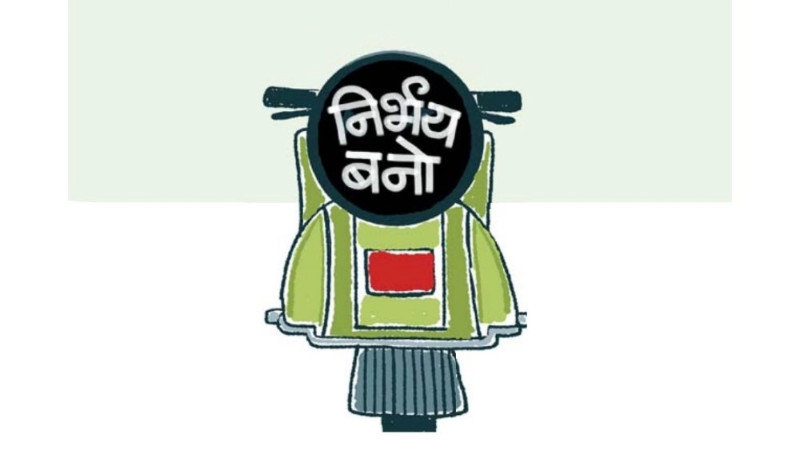

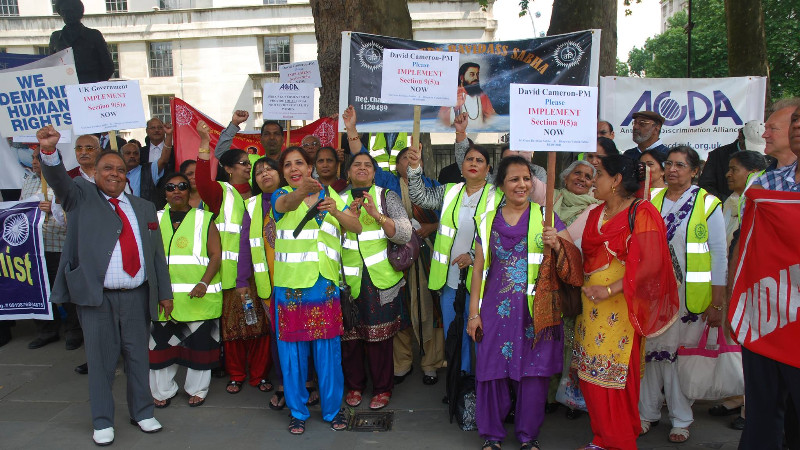
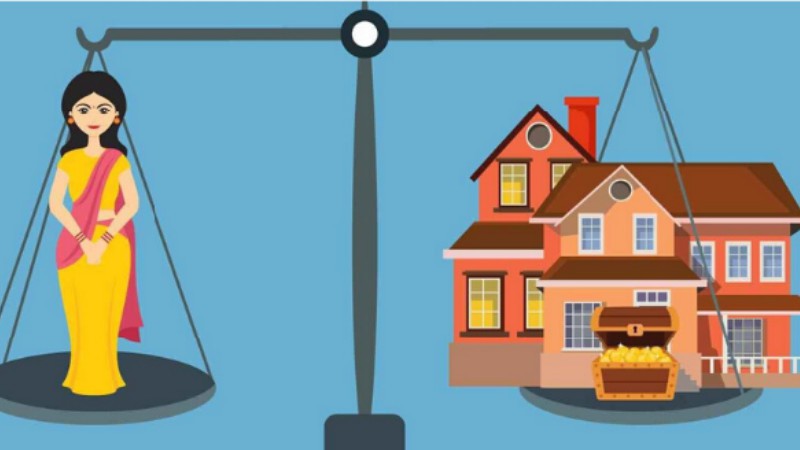

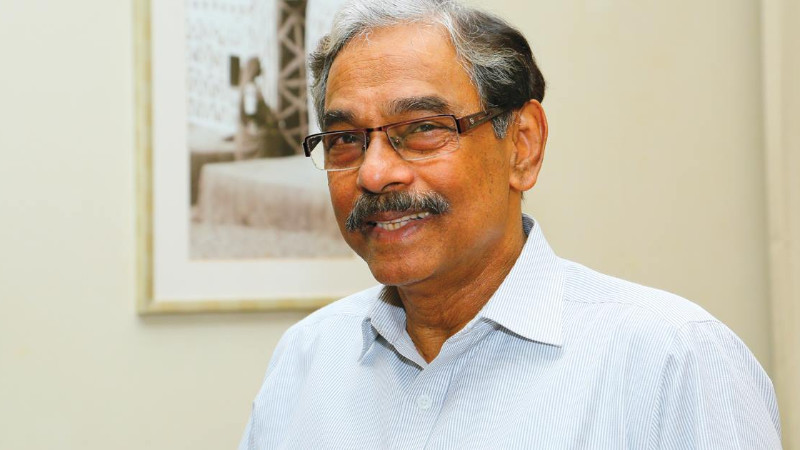
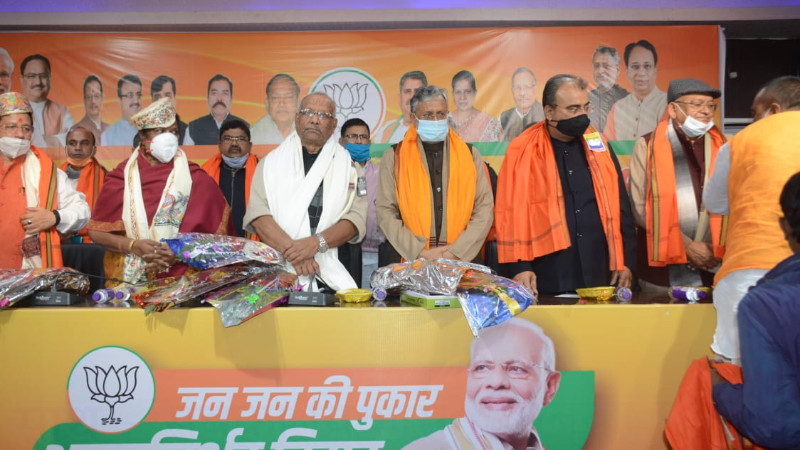
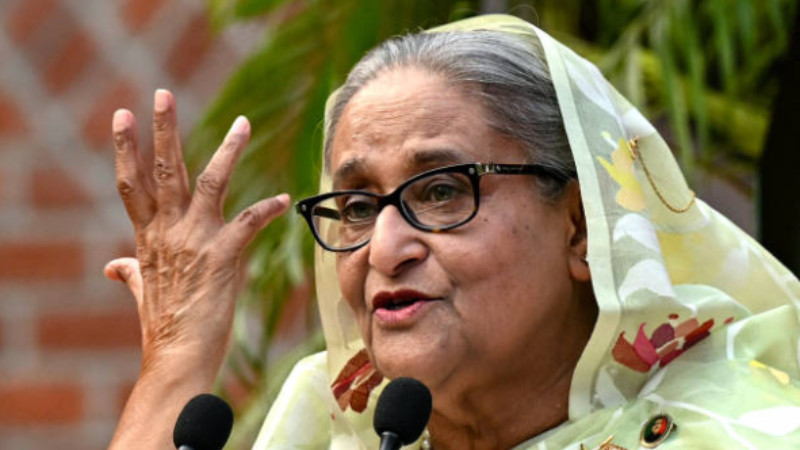
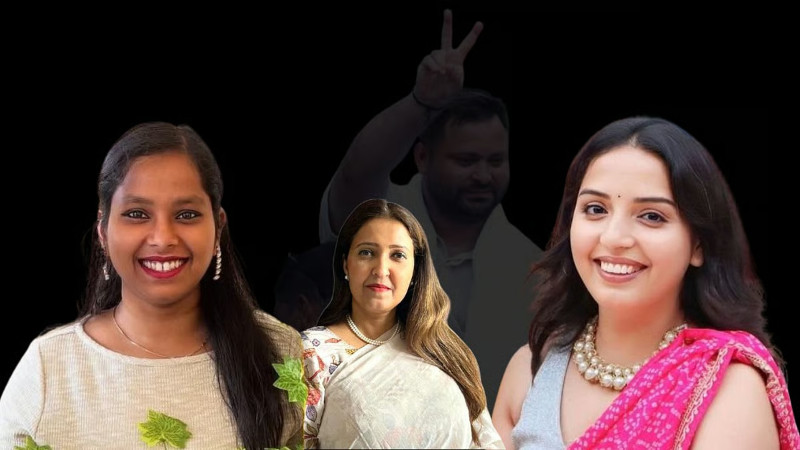
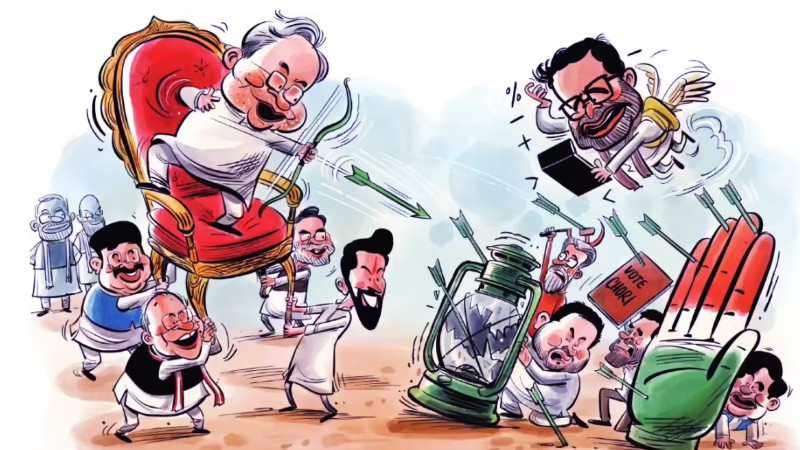
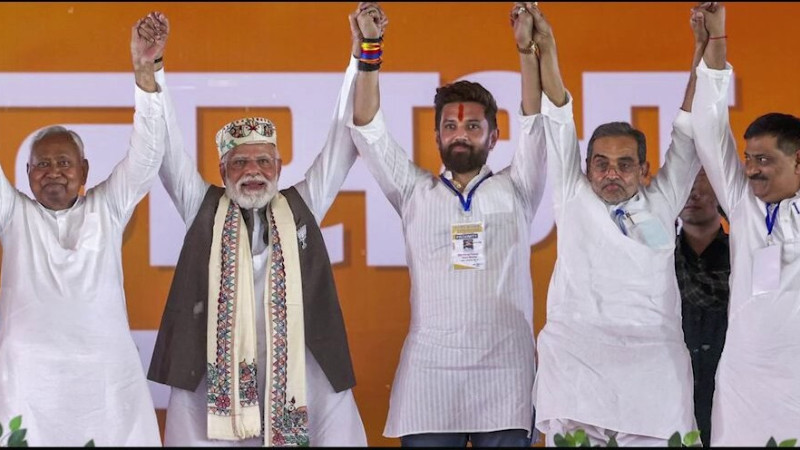
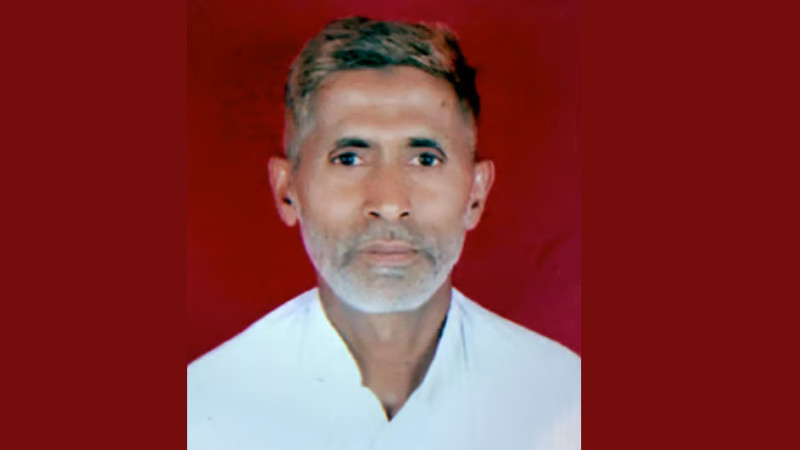
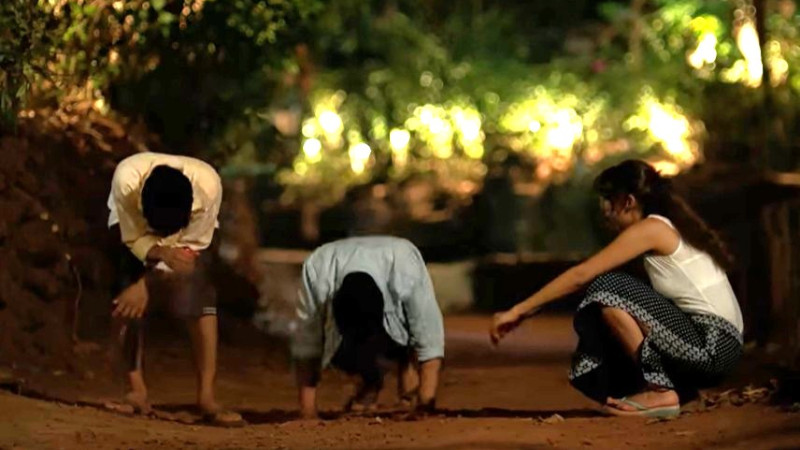
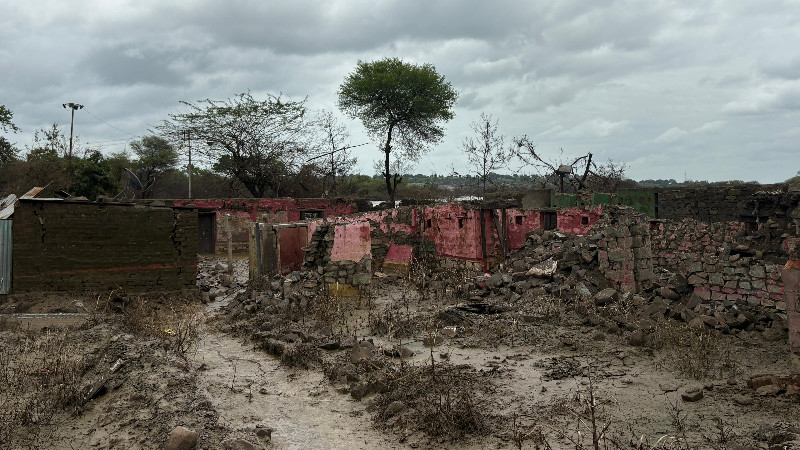
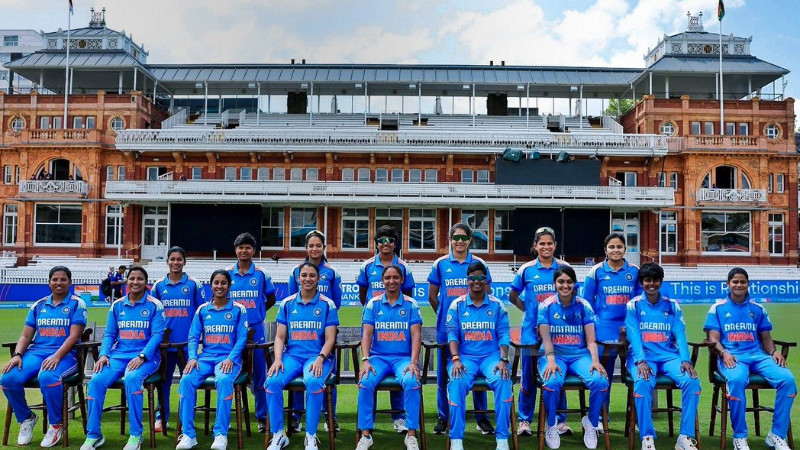
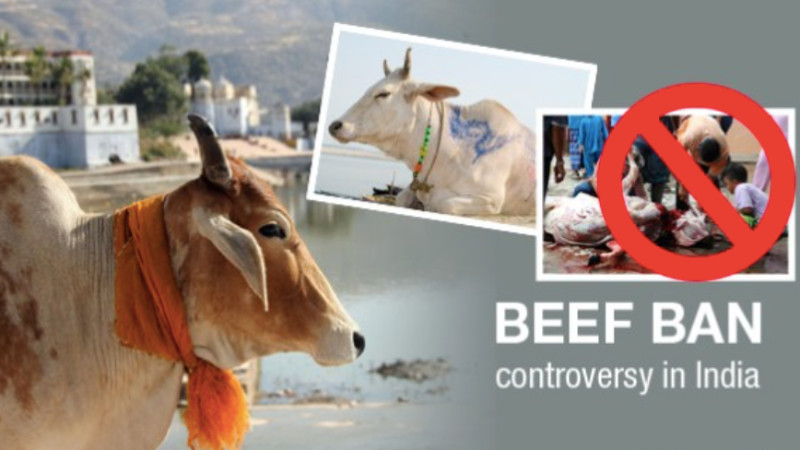
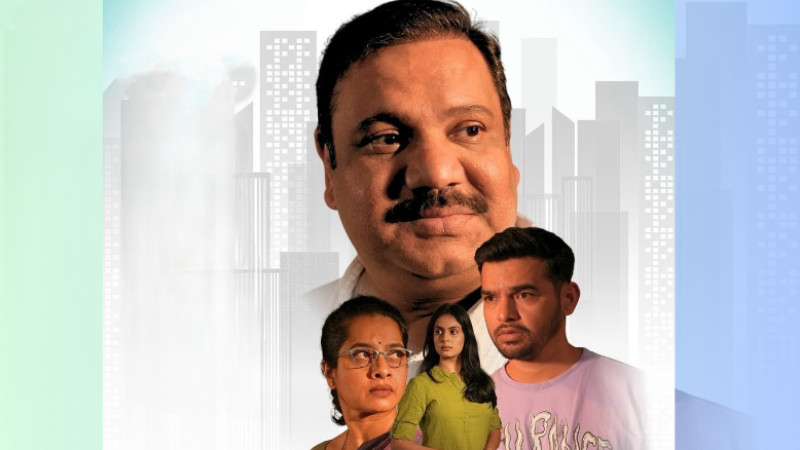
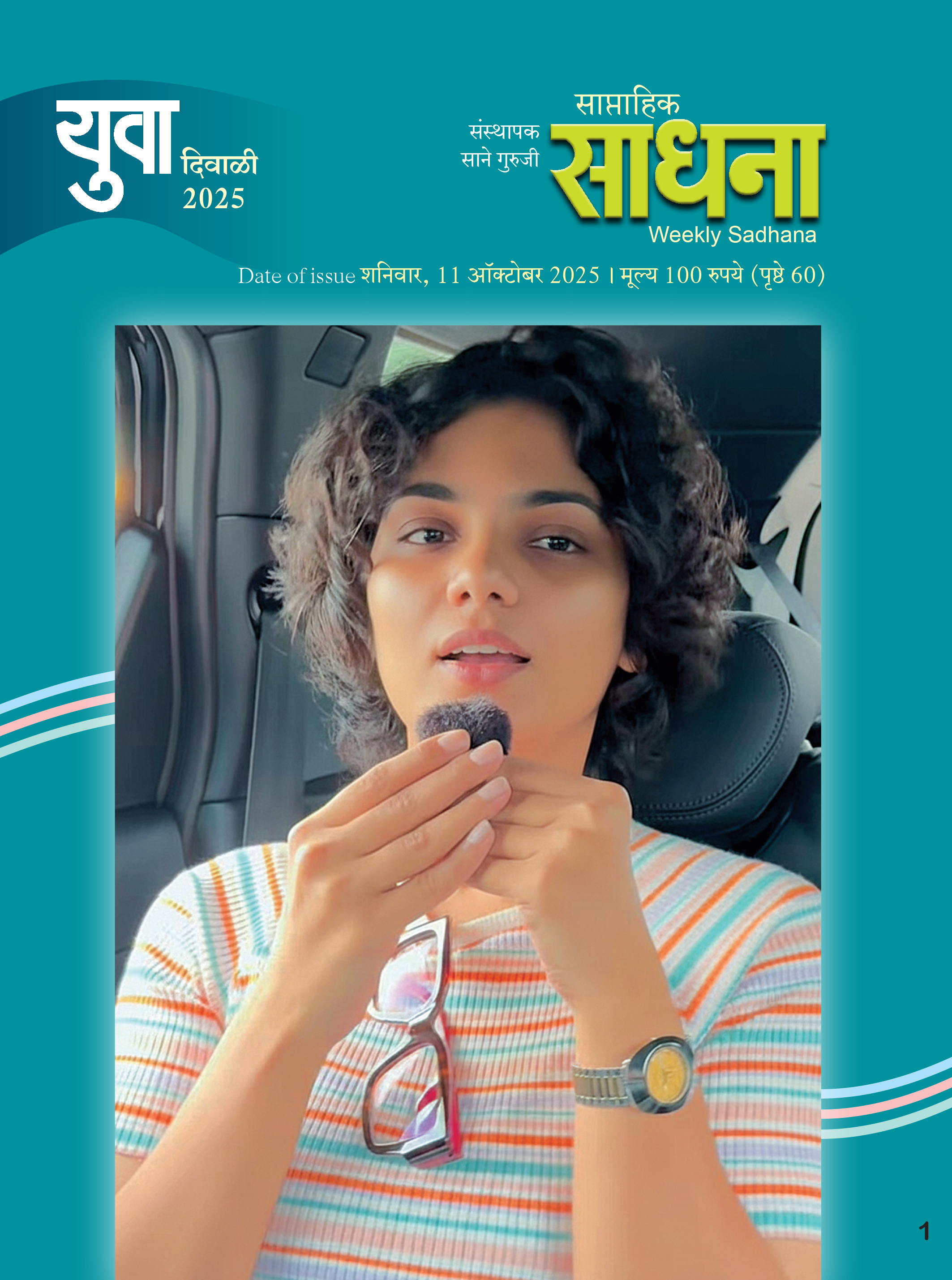





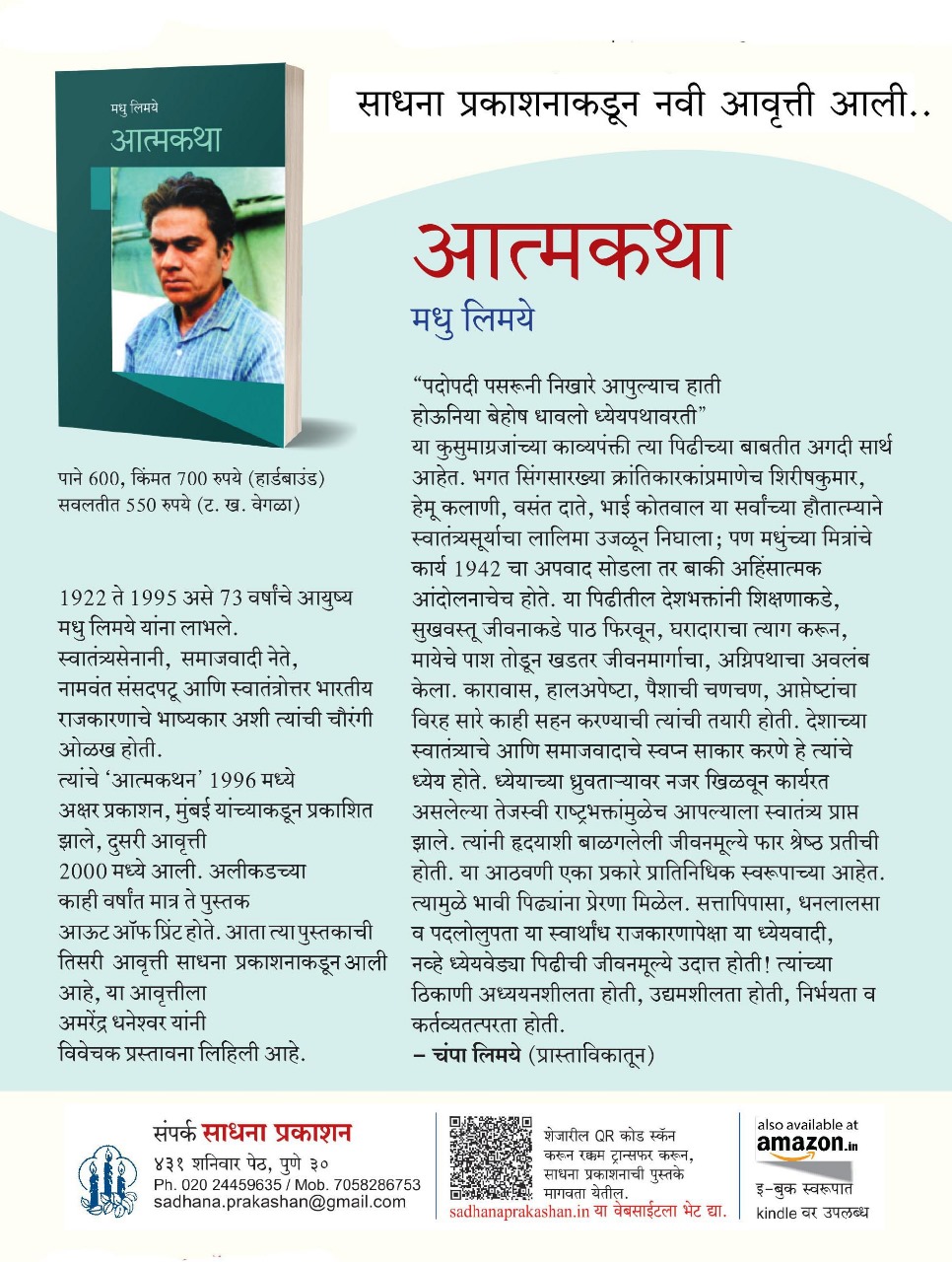



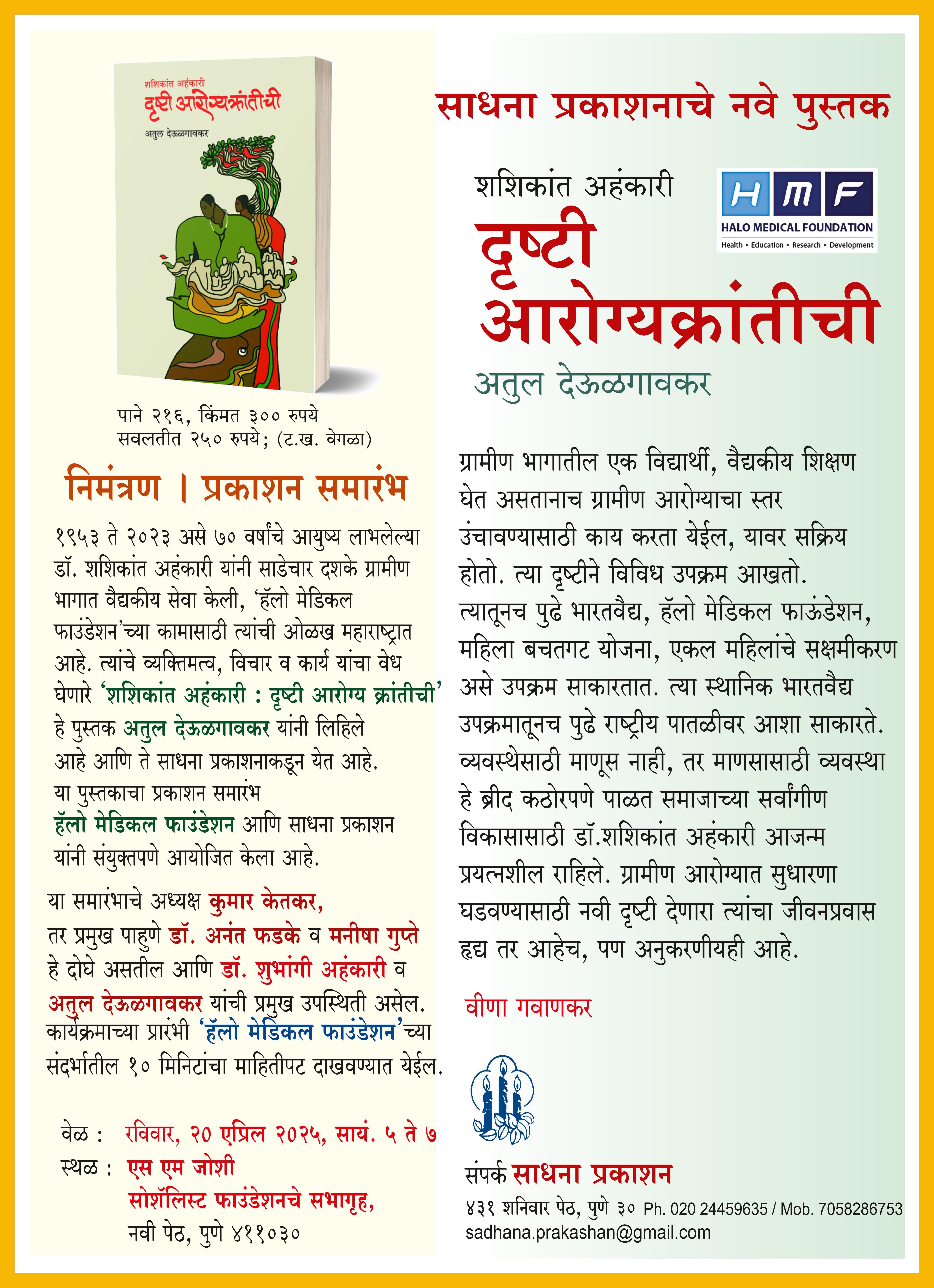



Add Comment